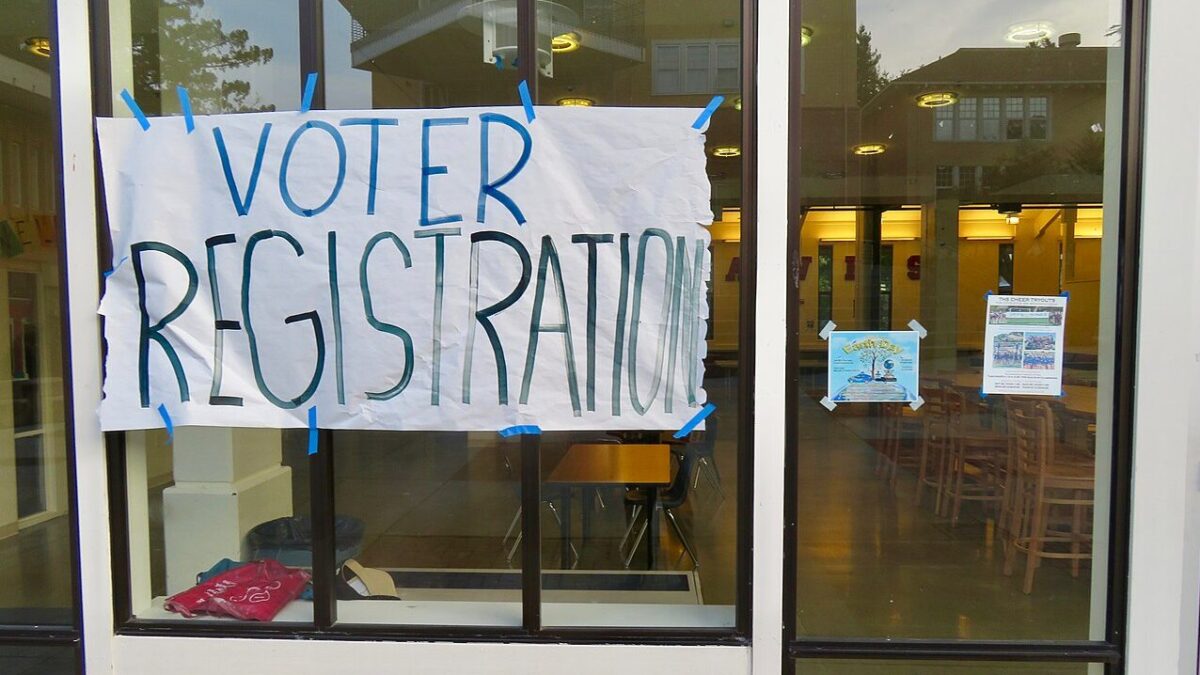
Over the last several years, the press and television have publicized many parents’ frustration with how math is being taught in the lower grades. Internet videos, such as the one below, abound with examples of how procedures such as addition and subtraction are being taught to students using convoluted methods that leave students and parents baffled over 1) how to do the procedure and 2) angry that the standard methods are delayed.
The current interpretation of Common Core by publishers and instructional coaches maintains that teaching the standard methods (known as standard algorithms) for various procedures too early can eclipse the conceptual underpinning of why the algorithms work, sometimes confusing students.
A video by one instructional coach argues that teaching only procedures 1) has only worked for a small group of students and 2) that the reason students have a hard time with math is “No one taught them to understand the concepts and why we’re doing what we’re doing. We didn’t teach them how to think; we just taught them how to ‘do’ and execute…” The premise is that Common Core focuses on “understanding,” solving this problem.
Is that true? And to what extent should we continue to blame Common Core if so?
Here’s a Case in Point
I was recently working with a group of fifth graders who needed math remediation at my school. I was having them do the exercises in their book for multiplying fractions. Instead of simply applying the standard method (or algorithm), in which we multiply numerators by numerators and denominators by denominators, students first had to draw diagrams for each and every problem.
Such diagrams have been used in many textbooks to motivate the particular procedure for multiplying fractions. They use the area of a square to illustrate what multiplication of fractions represents, and why one multiplies numerators and denominators.
For example, a problem like 3⁄4 × 2⁄3 is demonstrated by dividing a square into three columns and shading two of them, thus representing 2⁄3 of the area of the square. Then the square is divided into four rows, with three shaded—this is 3⁄4 of the area of the square. Where the two shaded areas intersect therefore represents 3⁄4 of 2⁄3 of the square. This intersection yields six little boxes shaded out of a total of 12 little boxes, which is 6/12 or 1/2 of the whole square.
Teachers and textbooks use this illustration to explain the reasoning—the conceptual understanding—behind multiplying numerators and denominators. The students see what 3/4 of 2/3 means in this model in terms of area of a square.
This Isn’t New or Innovative
This was the same explanation used in my old arithmetic book from the 1960s and in other textbooks from then and earlier, belying the notion that traditionally taught math ignores understanding and focuses only on rote memorization.

This is also the method used in Singapore’s math textbooks. It effectively demonstrates what fraction multiplication represents and why one multiplies numerators and denominators. Singapore’s textbooks (and mine) ask students to use the area model for, at most, two fraction multiplication problems. Then they let students loose to solve more problems using the algorithm.
But in the current slew of textbooks claiming alignment with the Common Core, after the initial presentation of the diagram to show what fraction multiplication is and why and how it works, the subsequent exercises require students to draw these type of diagrams for a full set of fraction multiplication problems. This is supposedly to “drill” student understanding of what is happening with fraction multiplication before they are allowed to do it algorithmically.
Such approaches to math teaching in the lower grades are a product of many years of mischaracterizing and maligning traditional teaching methods. The math “reform” movement—often called “New Math” or derisively “fuzzy math”—touts many poster children. School administrations, districts, and many teachers take their views as articles of faith, often having been indoctrinated in schools of education that also teach these methods.
Such topsy-turvy approaches to math education have been around for more than two decades, but the interpretation and implementation of Common Core since it went into effect around 2015 has again popularized them. To compensate for what some believe is students’ lack of understanding, mathematics teaching has been structured to drag work out far longer than necessary with multiple procedures, diagrams, and awkward, bulky explanations.
Ultimately, these exercises in understanding simply become new procedures, which small children attempt to learn and memorize because that is what many small children do. On top of all that, these methods are inefficient and confusing, resulting in frustration that feeds children’s dislike of math—something this method was supposed to cure.
Pedagogy Inside Common Core’s ‘Instructional Shifts’
Where is this interpretation coming from? One possible source are the “shifts” in math instruction discussed on Common Core’s website. One of the shifts is “rigor,” which the website translates as: “Pursue conceptual understanding, procedural skills and fluency, and application with equal intensity.” The site also mentions that students should attain fluency with core functions such as multiplication (and by extension, multiplication of fractions): “Students must be able to access concepts from a number of perspectives in order to see math as more than a set of mnemonics or discrete procedures.”
I learned of the connection between these “instructional shifts” and the current practice of drilling understanding in a conversation I had with one of the key writers and designers of the EngageNY/Eureka Math program. EngageNY started in New York state to fulfill Common Core and is now being used in many school districts across the United States. I noted that on the EngageNY website, the “key shifts” in math instruction went from the three on the original Common Core website (focus, coherence, and rigor) to six. The last one of these six is called “dual intensity.” According to my contact at EngageNY, it’s an interpretation of Common Core’s definition of “rigor.” It states:
Dual Intensity: Students are practicing and understanding. There is more than a balance between these two things in the classroom – both are occurring with intensity. Teachers create opportunities for students to participate in “drills” and make use of those skills through extended application of math concepts. The amount of time and energy spent practicing and understanding learning environments is driven by the specific mathematical concept and therefore, varies throughout the given school year.
He told me the original definition of rigor at the Common Core website was a stroke of genius that made it hard for anti-intellectuals to speak of “rigorous” in loosey-goosey ways. He was able to justify EngageNY/Eureka’s emphasis on fluency. So while his intentions were good—to use the definition of “rigor” to increase the emphasis on procedural fluency—it appears he was co-opted to make sure that “understanding” took precedence.
In our discussion, I pointed to EngageNY’s insistence on students drawing diagrams to show place value in adding and subtracting numbers that required regrouping (a.k.a. “carrying” and “borrowing”—words now anathema in this new age of math understanding). I asked if students were barred from using the standard algorithm until they acquired “mastery” of the pictorial procedure.
His answer was evasive, along the lines of “Of course we want students to use numbers and not be dependent on diagrams, but it’s important that they understand how the algorithms work.” He eventually stated that Eureka “doesn’t do standard algorithms until students know the prerequisites needed to do them.”
Thus, despite Common Core’s proclamations that the standards do not prescribe pedagogical approaches, it appears their definition of “rigor” leaves room for interpretations that conclude understanding must come before procedure.
‘Understanding’ Coexists with Procedural Fluency
Understanding and procedure work in tandem. Sometimes understanding comes first, sometimes later. As evidenced by EngageNY/Eureka Math and other programs making inroads in school districts across the United States, the Common Core way is “understanding first, procedure later.” This latest interpretation makes it appear as if both sides have reached common ground. Reformers can now say “You see? We’re not against drills”—provided such drills are drilling understanding.
The major problem with this approach is that not all students take away the understanding that the method is supposed to provide. Some get it, some don’t. While it may work to give the adults who design such programs a mental visualization, they’ve had the advantage of many years of math experience and content knowledge that students in fifth, sixth, and even seventh and eighth grades do not have.
Students are forced to show what passes for understanding at every point of even the simplest computations. This drilling of understanding approach undermines what the “understanding” gurus want to achieve in the first place. They are ultimately demanding “rote understanding”: an out-loud articulation of meaning in every stage that is the arithmetic equivalent of forcing a reader to keep a finger on the page, sounding out every word, every time, with no progression of reading skill.
The Seductive Nature of a Bad Idea
The scary part about all of this is how easy it is to get swept in to the recommended methods. While working with the fifth graders, I insisted they draw the diagram to go along with each problem, when midway through the period I realized that I was forcing them to do something that I felt was ineffective. (Added note: The program I was working with was not Eureka Math, by the way, but My Math. Eureka Math is not the only program to apply the interpretation so described here.) The next day, I announced to them that instead of having to do the rectangle diagrams, they could just do the fraction multiplication itself.
While the fifth graders met this decision with cheers, I couldn’t help feeling guilty in spite of my own beliefs. I imagined curriculum consultants shaking their heads in dismay, believing that I was leading the students down the path of ignorance, destined to be “math zombies.”
The “math reform” movement has succeeded in foisting its beliefs upon ever-growing populations of new teachers who believe this is the only way. These beliefs are now extending to well-meaning mathematicians who had publicly opposed much of the reform philosophy.
In trying to overturn students “doing but not knowing,” these theorists have unwittingly created a new poster child. While they believe this poster child represents one with “deep understanding,” they have instead created a child for whom “understanding” foundational math is not even “doing” math.









